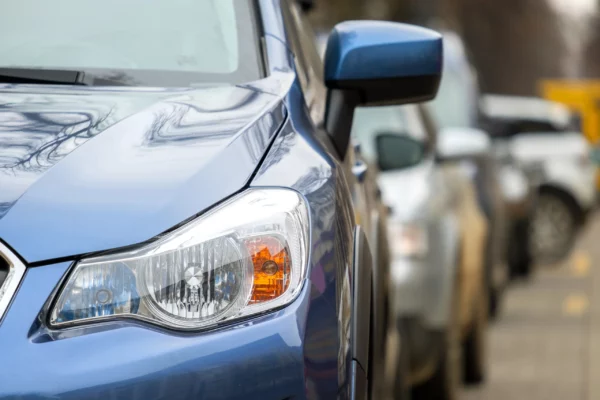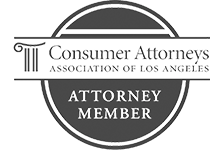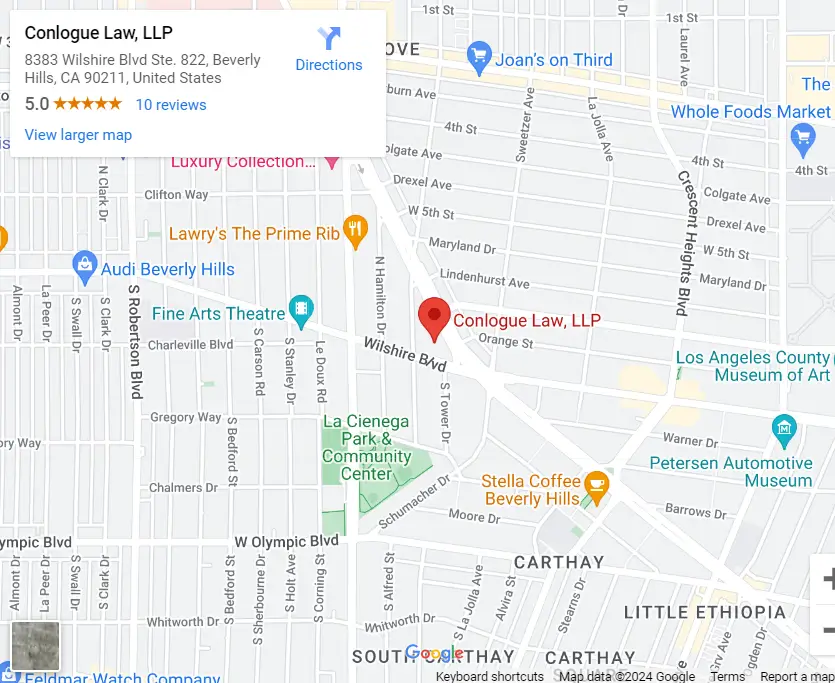The Essential Guide To California’s Headlight Laws
California car light laws are designed to enhance road safety and ensure drivers maintain optimal visibility in various driving conditions. Whether you’re a veteran driver or new to the Golden State, understanding these headlight laws is crucial for ensuring your safety and avoiding citations.
This guide will illuminate (pun intended!) everything you need to know about California’s headlight laws. We’ll cover when you must use your headlights, the proper headlight types and positioning, and some additional recommendations for optimal visibility.
Key Summary:
- Understanding when to use headlights is crucial under California law. Headlights must be used from 30 minutes after sunset until 30 minutes before sunrise, during inclement weather reducing visibility, in tunnels, and in designated safety zones.
- California imposes specific restrictions on the use of high-beam headlights to minimize glare and ensure safety. High beams must be dimmed when approaching oncoming traffic within 500 feet, when following another vehicle within 300 feet, in well-lit areas with sufficient street lighting, and during adverse weather conditions like fog or heavy precipitation.
- Headlights in California must emit either white or yellow light to ensure optimal visibility without causing confusion or discomfort to other drivers. Modifications to headlights, such as colored tints or non-standard lights emitting different colors, are generally prohibited due to safety concerns. Additionally, headlights must be positioned within specified height ranges and aligned properly to ensure effective illumination of the road ahead and to prevent glare for oncoming drivers.
- Violating California’s headlight laws can lead to fines, traffic citations, and points on your driving record, along with possible additional court fees and required vehicle inspections. Repeated violations may also result in higher insurance premiums, emphasizing the importance of compliance for both safety and cost.
Ensure you’re driving safely and responsibly in California. A few extra seconds to turn on your headlights can significantly improve your visibility and prevent accidents.
When to Use Car Headlights in California?
In California, there are specific rules and conditions under which you are required to use headlights. These rules are designed to enhance visibility and safety on the roads. Here are the key situations when you must use headlights in California:
Darkness
Headlights must be used from 30 minutes after sunset until 30 minutes before sunrise to ensure visibility and safety. This rule helps reduce the risk of accidents by making your vehicle noticeable to other drivers and providing necessary illumination in the dark.
Weather Conditions
Turn on your headlights when visibility is impaired by weather conditions like rain, fog, snow, or dust. If you’re using windshield wipers continuously, you are legally required to use your headlights to improve visibility and ensure others can see your vehicle.
Tunnels and Safety Zones
Use headlights when driving through tunnels at any time, as they improve visibility and safety during the sudden change from daylight to darkness. Similarly, headlights are required in designated safety zones, like near schools or pedestrian crossings, to ensure enhanced visibility.
When Visibility is Poor
Use headlights whenever you can’t see at least 1,000 feet ahead, due to conditions like heavy rain, fog, smoke, or poorly lit roads. This improves road visibility and ensures other drivers can see your vehicle, reducing the risk of accidents.
Are There Restrictions On Use of High-Beam Headlights?
Yes, there are specific restrictions on the use of high-beam headlights in California to ensure the safety and comfort of all road users. High-beam headlights are an essential feature in vehicles. They are designed to provide maximum illumination for the road ahead, especially in dark and rural areas.
However, due to their intense brightness, high-beam headlights can also pose a risk to other road users if not used appropriately. Here are the key restrictions on the use of high-beam headlights in California:
Oncoming Traffic
When you are within 500 feet of an oncoming vehicle, you must dim your high-beam headlights. High beams can cause significant glare and temporarily blind oncoming drivers, increasing the risk of an accident. Switching to low beams helps prevent this and ensures that both you and the other driver can see the road clearly.
Following Another Vehicle
If you are following another vehicle within 300 feet, you must use low-beam headlights. High beams can reflect off the rear-view mirrors of the vehicle ahead, causing discomfort and potentially impairing the driver’s ability to see the road. Keeping your lights on low beam helps maintain safe driving conditions for the vehicle in front of you.
In Areas with Street Lighting
In areas where there is sufficient street lighting, such as urban or suburban roads, you should avoid using high beams. Streetlights provide adequate illumination, and high beams are usually unnecessary. Using high beams in well-lit areas can be distracting and blinding to other drivers and pedestrians.
Fog, Rain, or Snow
Avoid using high beams in fog, heavy rain, or snow. High beams can reflect off these particles in the air, creating a “white wall” effect that reduces your visibility even further. In such conditions, low beams or fog lights are more effective in providing the necessary illumination without causing glare.
Always be ready to switch between high and low beams depending on the road conditions and the presence of other vehicles. By following these guidelines and being mindful of when to use high-beam and low-beam headlights, you can help ensure a safer driving environment for yourself and others on the road.
Are There Requirements on Color and Positioning of Car Lights?
Specific regulations govern the color and positioning of headlight requirements in California to ensure uniformity, visibility, and minimize the risk of glare or confusion for other road users. These regulations are designed to enhance road safety by ensuring that headlights provide adequate illumination without causing discomfort or impairing the vision of drivers in oncoming vehicles.
Requirements on Color of Headlights
- White or Yellow Light: According to California Vehicle Code, headlights must emit a white or yellow light. These colors are chosen because they provide optimal visibility and clarity in most driving conditions. Blue, red, and other colors are reserved for emergency vehicles or other specific uses, as they can be distracting or confusing to other drivers.
- Aftermarket Modifications: Modifying headlights with colored tints or using non-standard lights that emit colors other than white or yellow is generally prohibited. Such modifications can reduce visibility and pose safety hazards, especially in low-light conditions.
Requirements on Positioning of Headlights
- Height: Headlights must be mounted at a height between 22 inches and 54 inches from the ground. This range ensures that the light beam is projected at an appropriate angle to illuminate the road ahead without causing excessive glare for drivers in oncoming vehicles.
- Alignment: Proper alignment of headlights is critical to ensure that the light is directed where it is needed most. Misaligned headlights can cause uneven illumination or glare, impairing visibility for both the driver and others on the road.
- Number and Spacing: Vehicles must have at least two operational headlights, positioned symmetrically on each side of the front of the vehicle. This arrangement ensures balanced illumination and helps drivers judge distances accurately in low-light conditions.
Motorcycle Headlights
Motorcycle headlights are of particular importance in terms of safety, visibility, and compliance with traffic regulations. Here are some key aspects related to motorcycle headlights and their impact on safety and legal considerations:
- Always-On Requirement: California motorcycles are required to have their headlights on at all times, both during the day and at night. This is known as a “universal daytime headlight use” law and is intended to increase the visibility of motorcycles to other road users.
- Number of Headlights: Motorcycles are typically required to have at least one functional headlight. Some motorcycles may have multiple headlights, but at least one must be operational.
- Headlight Brightness: Headlights must meet certain brightness standards outlined in the California Vehicle Code. The intensity of the light emitted must be within specified limits to ensure visibility without causing undue glare for other road users.
- Color of Light: Headlights must emit a white or yellow light. The use of colored lights other than white or yellow may be restricted, especially when visible from the front of the motorcycle.
- Proper Aim and Alignment: Ensuring that motorcycle headlights are properly aimed and aligned is essential. Misaligned headlights can create glare for oncoming drivers and may reduce their effectiveness in illuminating the road ahead for the motorcycle rider.
- Auxiliary Lighting: Some motorcycle riders install additional lighting, such as auxiliary lights or LED strips, for increased visibility. While these can be beneficial, it’s important to ensure that they comply with local regulations to avoid distractions or glare that could contribute to accidents.
- Headlight Modulation Systems: Motorcycles may be equipped with a headlamp modulation system that alternately flashes the upper beam, under certain conditions.
What Will Happen If I Violate California’s Headlight Laws?
Violating California headlight laws can result in several consequences, both legal and practical. Here’s what could happen if you are found to be in violation:
- Traffic Citations: Law enforcement officers can issue a traffic citation if your vehicle’s headlights do not comply with California Vehicle Code requirements. This citation typically includes a fine that varies depending on the specific violation. It may also result in points being added to your driving record.
- Penalties and Fees: In addition to fines, there may be additional court fees or penalties associated with the citation. The amount can vary depending on the severity of the violation and whether it is a first offense or a repeat offense.
- Vehicle Inspections: If your vehicle is cited for headlight violations, you may be required to have the headlights inspected and brought into compliance. This could involve additional time and expense to correct the issue and have the vehicle re-evaluated.
- Impact on Insurance: While a single headlight violation may not directly impact your insurance rates, multiple violations or citations for non-compliance with vehicle safety regulations could lead to higher insurance premiums. Insurance companies often consider driving record and vehicle compliance when determining rates.
While the fines themselves might not seem significant, the cumulative impact of a citation and potential insurance rate hikes can be a costly consequence. More importantly, following headlight laws is about safety. By ensuring your car is visible, you’re helping to prevent accidents and protecting yourself and others on the road.
Headlights Laws and Personal Injury Case
The use and condition of headlights can have a significant impact on personal injury cases, especially those involving motor vehicle accidents. Here are some ways in which headlights can influence the outcome of such cases:
Visibility and Negligence
If a driver fails to use headlights when required, such as during low-light conditions or inclement weather, it may be considered negligent behavior. Negligence can be a key factor in personal injury cases, and the failure to use headlights properly may contribute to establishing liability.
Comparative Fault
The concept of pure comparative fault in California may apply. If a plaintiff (injured party) is found to be partially responsible for the accident, their recovery may be reduced. Proper use of headlights can be a factor in determining whether a plaintiff bears any responsibility for the accident.
Establishing Fault
The condition and functionality of headlights can be crucial in establishing fault in an accident. For example, if a driver’s headlights were not working properly or were improperly modified, it might contribute to determining liability.
Nighttime Accidents
In accidents that occur at night, the use of headlights becomes even more critical. If a driver failed to use headlights during nighttime hours and this contributed to the accident, it could be a crucial factor in determining negligence.
Proving Duty of Care
The use of headlights is often seen as a part of a driver’s duty of care. If a driver fails to meet this standard, it could strengthen the argument that they breached their duty, leading to a higher likelihood of being found negligent.
Documentation and Evidence
Properly functioning and well-maintained headlights are essential for a vehicle’s safety. Documentation of the condition of headlights, such as through photographs, repair records, or witness statements, can serve as valuable evidence in personal injury cases.
Visibility of Pedestrians and Bicyclists
Headlights are not only important for the driver’s visibility but also for the visibility of pedestrians and bicyclists. In cases involving these vulnerable road users, the use of headlights becomes crucial in preventing accidents and establishing the duty of care.
Government Regulations
Compliance with headlight laws and regulations is a factor in determining whether a driver acted reasonably. Non-compliance with these regulations may strengthen the argument for negligence.
The use, condition, and compliance with headlight regulations can play a significant role in personal injury cases. Proper use of headlights may demonstrate adherence to the duty of care, while failure to use or maintain them appropriately may contribute to negligence and liability.
Helping You Understand California Car Light Laws
California’s headlight laws are in place to promote safety for everyone on the road. By understanding these regulations and putting them into practice, you can be a responsible driver and contribute to a safer driving environment. However, if you do find yourself facing a citation for an alleged violation, Conlogue Law LLP is here to help.
Conlogue Law LLP can help you understand your options and fight for a fair resolution. We have extensive experience dealing with traffic violations, including headlight infractions. We also handle other vehicle and road related accidents such as motorcycle wrecks, bicycle crashes, car accidents, and more.
Don’t let a headlight citation become a bigger headache. Contact us today for a free consultation. We’ll help you see the path towards a brighter outcome.








